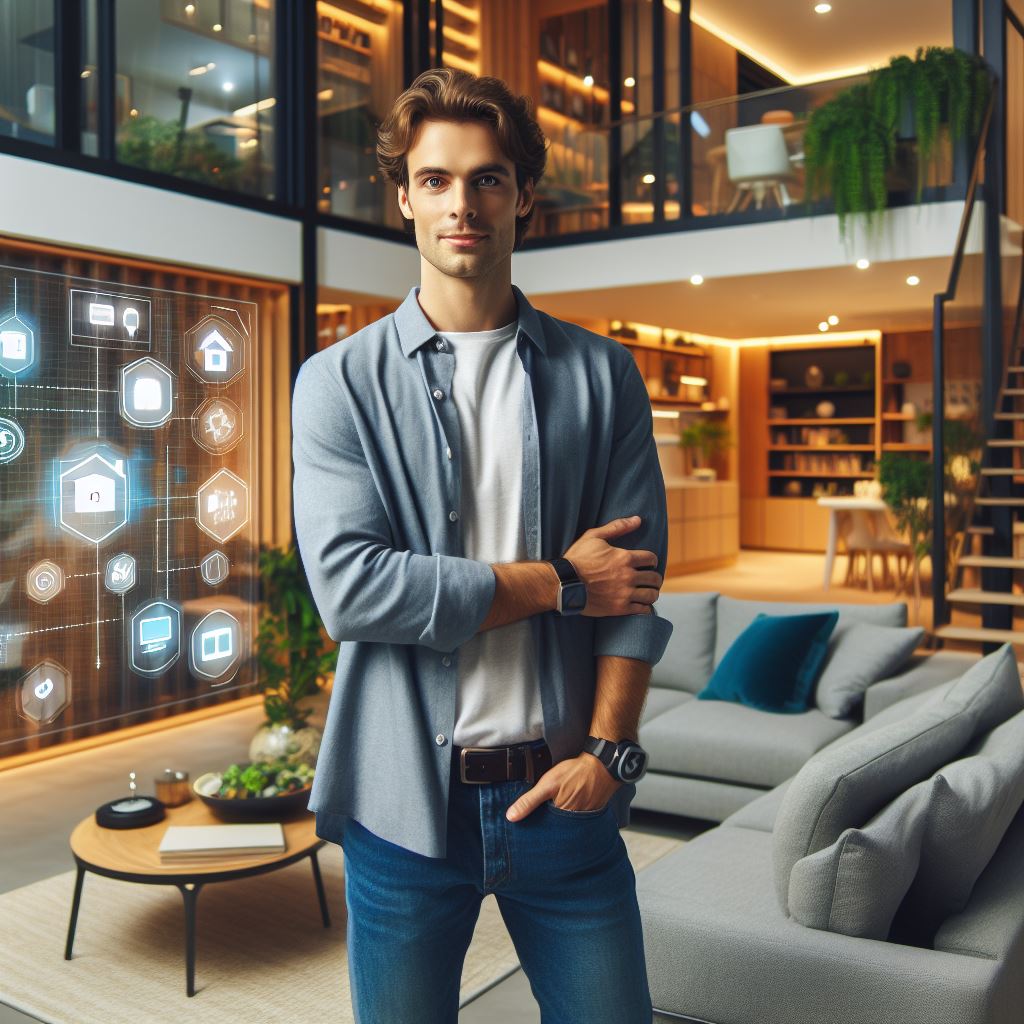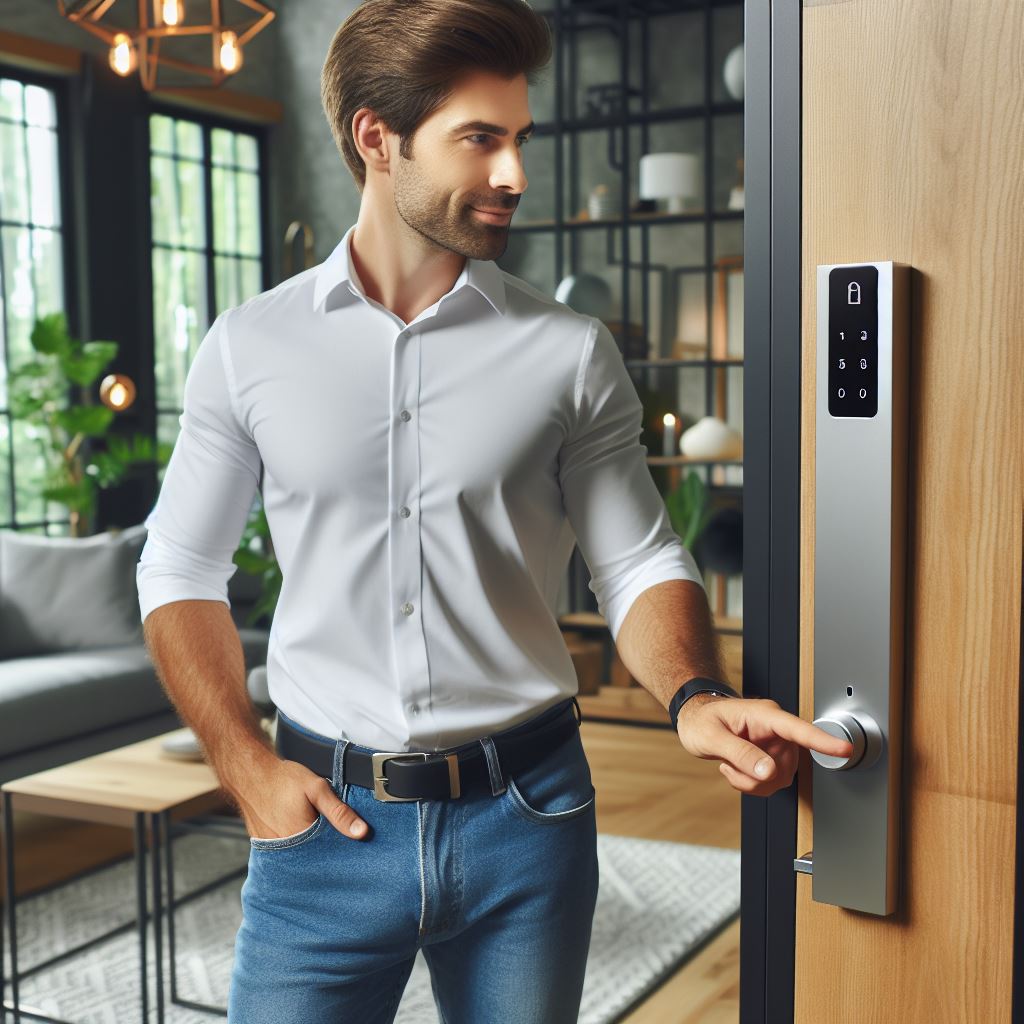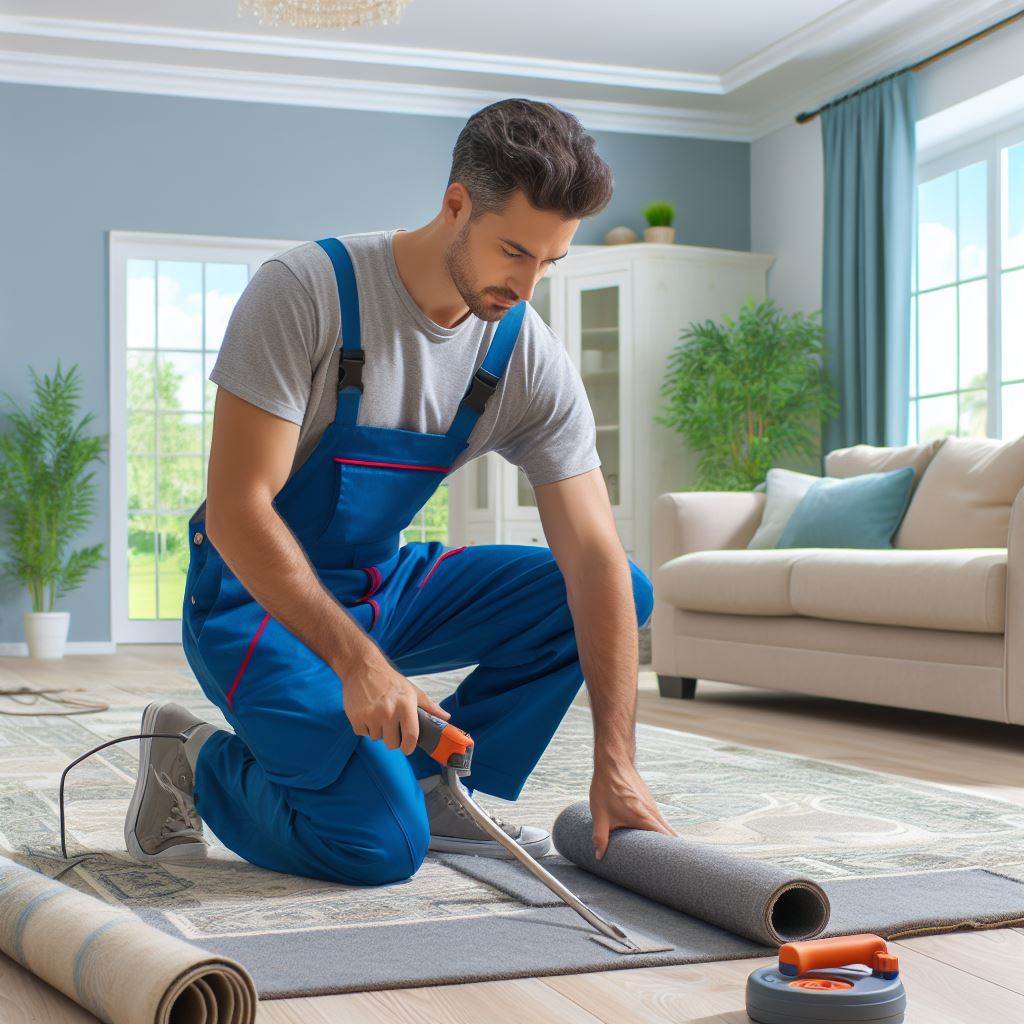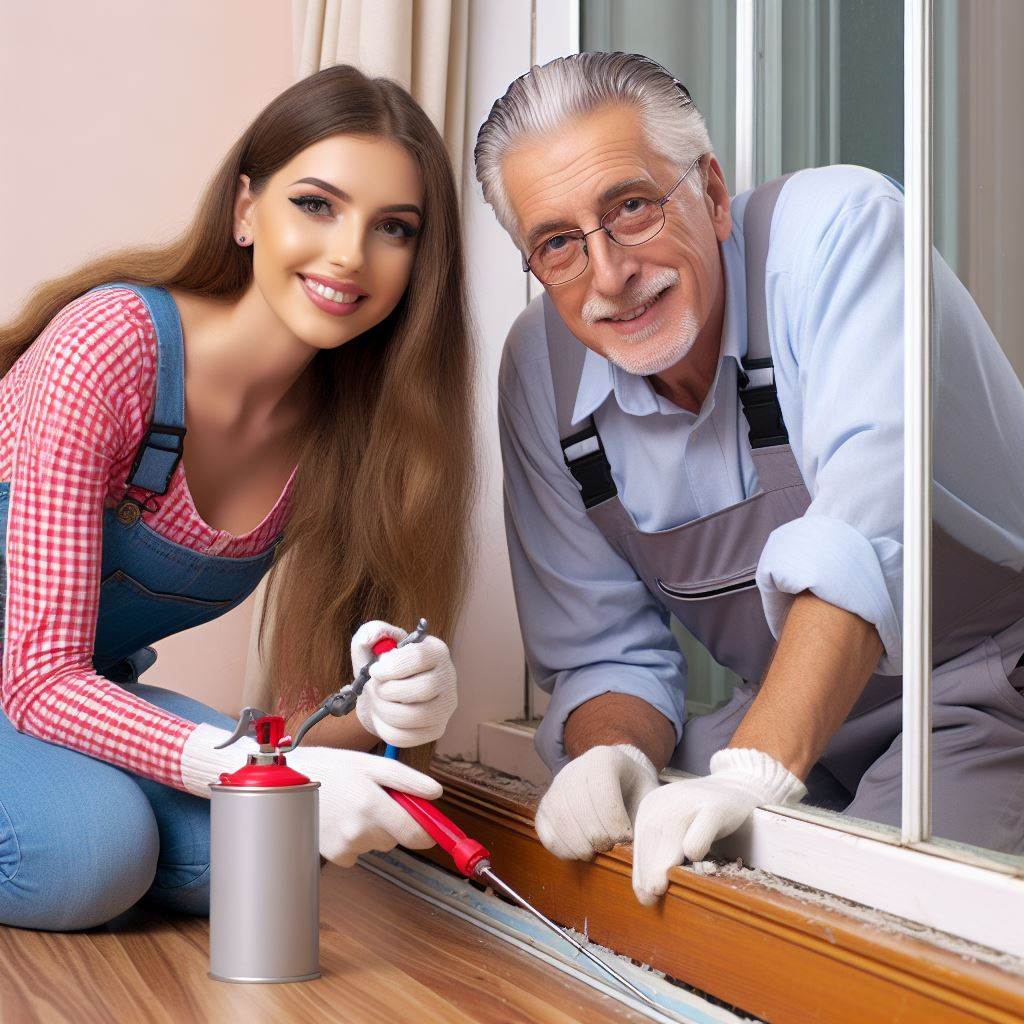Introduction
In today’s digital age, technology integration has become increasingly important in multi-unit properties.
With advancements in smart home and building automation systems, property owners can optimize energy efficiency, enhance security, and improve overall tenant satisfaction.
This blog post aims to explore the various benefits of technology integration in multi-unit properties.
To begin, technology integration offers significant advantages in terms of energy management.
Property owners can implement smart thermostats, occupancy sensors, and automated lighting systems to regulate temperature and lighting based on occupancy patterns.
By doing so, unnecessary energy consumption can be minimized, leading to reduced utility bills and a smaller carbon footprint.
Moreover, technology integration plays a pivotal role in ensuring the safety and security of multi-unit properties.
By installing smart locks, video surveillance systems, and access control systems, property owners can provide a secure environment for tenants.
These technologies allow for real-time monitoring and remote access, enhancing security measures and providing peace of mind for residents.
Additionally, technology integration can greatly enhance the overall tenant experience.
By offering amenities such as high-speed internet access, smart appliances, and mobile-based property management apps, property owners can provide convenience and streamline communication with tenants.
This not only improves tenant satisfaction but also facilitates efficient property management processes.
In fact, technology integration holds immense importance in multi-unit properties. From energy management to security enhancements, the benefits of technology integration are significant.
By embracing emerging technologies and incorporating them into their properties, owners can create more sustainable, secure, and tenant-friendly environments.
Stay tuned for the next section, where we will explore the different types of technology integration solutions available for multi-unit properties.
Benefits of Tech Integration in Multi-Unit Properties
In the fast-paced world of real estate, the integration of technology has become a game-changer for multi-unit properties.
The benefits of embracing tech solutions are vast, ranging from enhanced security to streamlined property management processes.
Enhanced security and surveillance systems
One of the primary advantages is the bolstering of security and surveillance systems.
Cutting-edge technologies, such as smart cameras and access control systems, provide an unprecedented level of protection.
Real-time monitoring and remote access capabilities empower property managers to keep a vigilant eye on the premises.
This not only deters potential threats but also ensures the safety of residents, fostering a secure living environment.
Improved energy management and cost savings
Improved energy management is another significant perk.
Smart thermostats, lighting systems, and energy-efficient appliances contribute to substantial cost savings.
Automated controls enable property managers to optimize energy usage, leading to lower utility bills and a reduced environmental footprint.
Residents also benefit from lower energy costs, making multi-unit properties more attractive and sustainable.
Streamlined communication and connectivity
Tech integration also addresses the challenge of communication and connectivity within multi-unit properties.
Advanced communication platforms enhance connectivity between residents and property management, fostering a sense of community.
Mobile apps and smart home devices facilitate seamless communication, ensuring that information flows effortlessly, from maintenance updates to community events.
This connectivity not only improves the overall living experience but also promotes a collaborative and engaged community.
Simplified property management processes
Simplified property management processes are perhaps the most transformative aspect of tech integration.
Cloud-based property management systems streamline administrative tasks, from lease management to maintenance requests.
Automation reduces the margin for error, enhances efficiency, and allows property managers to focus on delivering a superior living experience.
Residents, too, benefit from the convenience of digital platforms for payments, service requests, and community engagement.
In short, the integration of technology in multi-unit properties brings forth a myriad of benefits.
From heightened security and energy efficiency to improved communication and simplified management processes, tech integration is revolutionizing the way we approach real estate.
As we move into the future, embracing these innovations will be pivotal in creating modern, efficient, and desirable multi-unit living spaces.
Read: Appliance Maintenance: Extending Lifespan & Safety
Use of Smart Home Technology
In today’s fast-paced world, technology is rapidly becoming an integral part of our daily lives.
The rise of smart home technology has transformed the way we live, and its integration in multi-unit properties is no exception.
Integration of smart devices and systems
Gone are the days when property management was solely reliant on manual operations.
With the integration of smart home technology, multi-unit properties can now provide an unparalleled living experience for their tenants.
Control of lighting, temperature, and appliances remotely
One of the most significant advantages of smart home integration is the ability to control various aspects of the living space remotely.
Tenants can adjust the lighting, temperature, and even control their appliances with just a few taps on their smartphones.
This convenience not only enhances comfort but also helps in reducing energy consumption.
Voice-controlled assistants and virtual concierge services
Voice-controlled assistants and virtual concierge services are also transforming the way tenants interact with their living spaces.
With virtual assistants like Amazon’s Alexa or Google Assistant, tenants can control their entire home with simple voice commands.
From turning on the lights to playing their favorite music, these voice-controlled systems provide an unprecedented level of convenience and luxury.
Security features like smart locks and video doorbells
Moreover, the integration of smart home technology has significantly improved security features in multi-unit properties.
With smart locks, tenants no longer need to worry about losing their keys or forgetting to lock their doors.
These locks can be controlled remotely, and access can be granted to authorized individuals with ease.
Video doorbells equipped with cameras provide real-time monitoring of visitors, enhancing safety and privacy.
Smart home technology also offers numerous benefits to property owners and managers.
Through these systems, they can remotely monitor and manage multiple units from a single interface, streamlining maintenance and troubleshooting processes.
Access to real-time data enables proactive measures, ensuring the proper functioning of various systems and appliances within the units.
Furthermore, the integration of smart home technology can increase the market value of multi-unit properties.
With the growing demand for smart homes, tenants are more likely to choose properties that offer these advanced features.
This added value not only attracts potential tenants but also enhances rental rates and overall revenue for property owners.
In essence, the use of smart home technology in multi-unit properties has revolutionized the way these properties are managed and experienced.
Integration of smart devices and systems, control of lighting, temperature, and appliances remotely, voice-controlled assistants, and enhanced security features have transformed these properties into modern living spaces.
With the increasing reliance on technology, it is evident that smart home integration is the way forward for multi-unit properties.
Read: Cloud Computing in Property Management
Internet of Things (IoT) Applications
In today’s digital age, the integration of technology has become a crucial aspect of managing multi-unit properties.
With the rise of the Internet of Things (IoT), property owners can take advantage of various applications to streamline operations and enhance efficiency.
Let’s explore some of the key IoT applications that can be implemented in multi-unit properties:
Utilizing IoT devices for efficient monitoring and control
The IoT enables property owners to monitor various aspects of their buildings remotely using connected devices.
For example, by installing smart thermostats, property managers can control the temperature settings in different units from a centralized platform, ensuring optimal comfort for residents while saving on energy costs.
Smart meters for real-time energy consumption data
Traditional energy meters provide limited information, making it difficult to identify energy-saving opportunities.
However, by implementing smart meters, property owners can gather real-time data on energy consumption.
This information allows them to identify high-consumption areas, investigate potential issues, and implement strategies to reduce energy waste and lower utility bills.
Automated maintenance and predictive analytics
IoT technology enables the automation of maintenance tasks in multi-unit properties.
By installing sensors and connecting them to a centralized system, property managers can receive real-time notifications about equipment malfunctions or required maintenance.
This proactivity helps prevent costly repairs and ensures residents’ comfort and safety.
Sensor-based systems for water leak detection and prevention
Water leaks can cause significant damage to multi-unit properties, leading to expensive repairs and inconveniences for residents.
Implementing sensor-based systems, such as water leak detectors, allows property owners to receive immediate alerts when leaks occur. Rapid response minimizes the extent of the damage and reduces repair costs.
Integrating these IoT applications into multi-unit properties not only improves efficiency but also enhances the quality of life for residents.
The benefits extend beyond cost savings to greater convenience, comfort, and sustainability.
Moreover, property owners can leverage the data collected by IoT devices to make informed decisions and optimize resources.
With the growing availability and affordability of IoT devices, it becomes increasingly feasible for property owners to implement these technologies.
Factors before adopting IoT applications
- Compatibility: Ensure that the IoT devices and systems chosen are compatible with existing infrastructure and can integrate seamlessly.
- Security: Implement robust cybersecurity measures to protect sensitive data and prevent unauthorized access to the network.
- Scalability: Consider future expansion plans and ensure that the chosen IoT applications can accommodate potential growth.
- Reliability: Prioritize reliable IoT devices to minimize downtime and ensure consistent performance.
In a nutshell, the integration of IoT applications in multi-unit properties offers numerous benefits, ranging from improved monitoring and control to predictive maintenance and water leak prevention.
The ability to access real-time data and automate processes enhances efficiency, lowers costs, and provides a better living environment for residents.
As technology continues to advance, property owners should seize the opportunity to embrace IoT and stay ahead in the competitive property management industry.
Read: HVAC Maintenance: Keeping Tenants Happy & Healthy

Implementing Tech Integration in Multi-Unit Properties
When it comes to incorporating technology into multi-unit properties, several factors need to be considered.
This blog section discusses the key steps involved in implementing tech integration successfully.
From researching suitable technologies to planning for installation, each stage is crucial in ensuring smooth adoption.
Researching and Selecting Suitable Technologies
The first step is to identify the most suitable technologies for integration.
Property managers must thoroughly research available options and evaluate which solutions align with their specific requirements.
This involves considering factors like scalability, compatibility, and functionality.
Collaborating with Technology Providers and Vendors
Once potential technologies are identified, property managers should engage technology providers and vendors.
These experts can provide valuable insights into the capabilities and limitations of different systems, ensuring an informed decision-making process.
Conducting a Cost-Benefit Analysis
Before investing in any technology, it is essential to conduct a cost-benefit analysis.
Property managers need to weigh the potential benefits against the associated costs, including installation, maintenance, and training expenses.
This analysis helps justify the implementation and ensure a positive return on investment.
Planning for Installation and Training
Proper planning for installation and training is vital for successful implementation.
Property managers should create a detailed timeline that outlines the necessary tasks, milestones, and responsibilities.
Additionally, comprehensive training programs must be developed to educate staff and residents on utilizing the integrated technology effectively.
Benefits of Tech Integration in Multi-Unit Properties
Integration of technology in multi-unit properties brings forth a range of benefits for property managers, residents, and staff.
- Improved Efficiency: Tech integration streamlines various operational processes, saving time and effort.
- Enhanced Security: Smart security systems, access controls, and surveillance technology contribute to safer premises.
- Cost Savings: Automated processes and energy management systems help reduce utility costs in the long run.
- Enhanced Resident Experience: Smart home technologies enable personalized experiences and increased convenience.
- Data-Driven Decision Making: With integrated technology, property managers can gather valuable data to inform decision making and future planning.
Incorporating technology into multi-unit properties requires a systematic approach.
From researching suitable technologies to planning for installation, each step plays a vital role in the successful implementation of tech integration.
By leveraging technology’s potential, property managers can enhance efficiency, security, cost savings, resident experience, and data-driven decision making in their properties.
Read: Roof and Gutter Care: Tips for Property Longevity
Challenges and Solutions in Integrating Technology in Multi-Unit Propertie
In the fast-evolving landscape of real estate, the integration of technology in multi-unit properties has become both a necessity and a challenge.
As property managers strive to enhance efficiency and resident experiences, they are met with several hurdles in the journey towards tech integration.
Cost and Investment Considerations
The primary obstacle in adopting tech solutions for multi-unit properties is often the financial aspect.
Implementing cutting-edge technology requires a substantial upfront investment.
However, the long-term benefits, such as increased operational efficiency and improved resident satisfaction, can outweigh the initial costs.
To address this challenge, property managers should conduct a thorough cost-benefit analysis and explore flexible financing options or grants that support technology adoption in real estate.
Ensuring Compatibility and Scalability
Integrating diverse tech solutions across a multi-unit property can lead to compatibility issues.
The challenge is to ensure seamless interoperability among various systems and devices.
Adopting open-source platforms and standardized protocols can mitigate this challenge.
Additionally, property managers should opt for scalable solutions that can adapt to the evolving needs of the property, preventing the need for frequent overhauls.
Addressing Privacy and Data Security Concerns
In an era dominated by data-driven technologies, concerns over privacy and data security are paramount.
Property managers must prioritize robust cybersecurity measures to protect sensitive resident information.
Implementing encryption protocols, regular security audits, and compliance with data protection regulations can help build trust among residents and safeguard their privacy.
Providing Adequate Training and Support
Introducing technology to property management requires a shift in mindset and skillsets for both staff and residents.
Adequate training programs are essential to ensure that everyone involved understands and maximizes the benefits of the new technologies.
Offering ongoing support through dedicated helplines, online resources, and user-friendly interfaces can address the learning curve and foster a smooth transition.
In a nutshell, while challenges exist, the integration of technology in multi-unit properties is an inevitable evolution that promises substantial advantages.
By strategically addressing cost considerations, ensuring compatibility and scalability, prioritizing privacy and security, and providing robust training and support, property managers can navigate these challenges and unlock the full potential of tech integration in the real estate sector.
Case studies
Case Study: Pinnacle City Residences
In this case study, we will explore how Pinnacle City Residences successfully integrated technology into their multi-unit property.
The property management team implemented smart locks, smart thermostats, and a centralized control system.
This saved time for residents and improved security.
Case Study: Summit Towers
Summit Towers decided to invest in a comprehensive tech integration plan, including smart lighting, a building-wide security system, and a mobile app for residents.
The positive impact was seen in reduced energy consumption and increased resident satisfaction.
Positive impacts and feedback
Improved Security
By integrating technology into multi-unit properties, security is significantly enhanced.
Smart locks, surveillance cameras, and alarm systems provide residents and property managers with peace of mind.
Increased Efficiency
Tech integration in multi-unit properties streamlines operational tasks.
Smart thermostats and lighting systems automate energy management, resulting in substantial cost savings and improved sustainability.
Enhanced Convenience
Residents can control various aspects of their units through mobile apps, such as adjusting lighting, temperature, and receiving package notifications.
This level of convenience improves overall resident satisfaction.
Improved Communication
Property managers can effortlessly communicate with residents in real-time through mobile apps or centralized control systems, improving responsiveness and addressing concerns promptly.
Modern Appeal
Multi-unit properties with tech integration attract tech-savvy individuals who appreciate living in a technologically advanced environment.
This increases demand and property value.
Tech integration in multi-unit properties has proven to be a game-changer for both residents and property managers.
The success stories of Pinnacle City Residences and Summit Towers showcase the positive impacts it can have on security, efficiency, convenience, communication, and overall property appeal.
By embracing technology, multi-unit properties can stay competitive in the market while providing an enhanced living experience for residents.
Future Trends in Tech Integration
In the ever-evolving landscape of technology, the integration of cutting-edge advancements has become instrumental in reshaping the way we experience and manage multi-unit properties.
As we look ahead, several key trends are poised to redefine the future of tech integration in this sector.
Advancements in Artificial Intelligence and Machine Learning
Artificial intelligence (AI) and machine learning (ML) are at the forefront of revolutionizing the management and efficiency of multi-unit properties.
Smart building systems powered by AI can autonomously optimize energy consumption, enhance security protocols, and predict maintenance needs.
Property managers can leverage predictive analytics to foresee potential issues, allowing for proactive measures that prevent disruptions and enhance the overall resident experience.
AI-driven chatbots are also becoming integral for quick issue resolution and seamless communication.
Integration of Virtual Reality and Augmented Reality Technologies
The immersive experiences offered by virtual reality (VR) and augmented reality (AR) technologies are transforming the way potential tenants interact with spaces.
Virtual property tours, facilitated by VR, allow individuals to explore units remotely, saving time and resources.
AR applications enable residents to visualize furniture placement and design choices within their living spaces, facilitating a more personalized and efficient move-in process.
These technologies bridge the gap between physical and digital realms, enhancing the overall property experience.
Growth of Smart Cities and Sustainable Urban Developments
The rise of smart cities and sustainable urban developments is influencing the tech integration landscape in multi-unit properties.
Connected infrastructure, IoT devices, and data analytics contribute to creating more intelligent and resource-efficient communities.
Smart energy management systems reduce environmental impact, while integrated transportation solutions enhance connectivity.
Residents benefit from improved quality of life, and property managers can streamline operations through data-driven insights.
As multi-unit properties embrace these future trends in tech integration, they are poised to become more efficient, sustainable, and resident-centric.
The synergy of AI, VR, AR, and smart city developments creates a tech-driven ecosystem that not only meets the demands of modern living but also paves the way for a more connected and sustainable urban future.
Conclusion
The integration of technology in multi-unit properties is of utmost importance.
By embracing technology, property owners and managers can streamline operations and enhance the resident experience.
With the advancements in smart home devices, security systems, and communication platforms, the potential for the future is astounding.
Efficient property management, energy conservation, and improved security are just a few of the possibilities that await.
Therefore, it is crucial for property owners and managers to stay updated with the latest tech trends and implement them in their properties.
This will not only benefit the residents but also contribute to the overall success and profitability of the property.
By investing in tech integration, property owners and managers can attract tech-savvy residents and stay competitive in the market.
It is time to embrace technology in multi-unit properties and unlock the immense potential it offers for the future.




